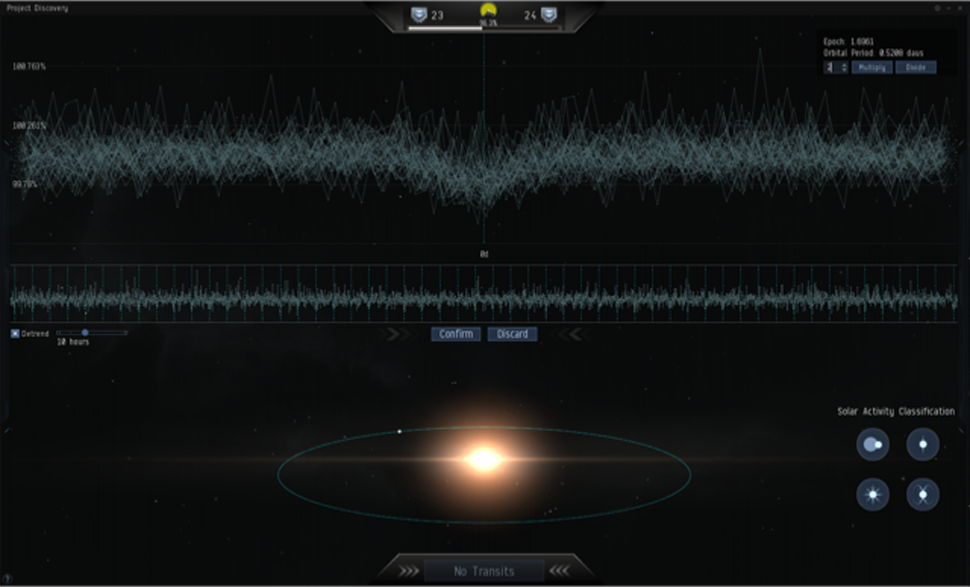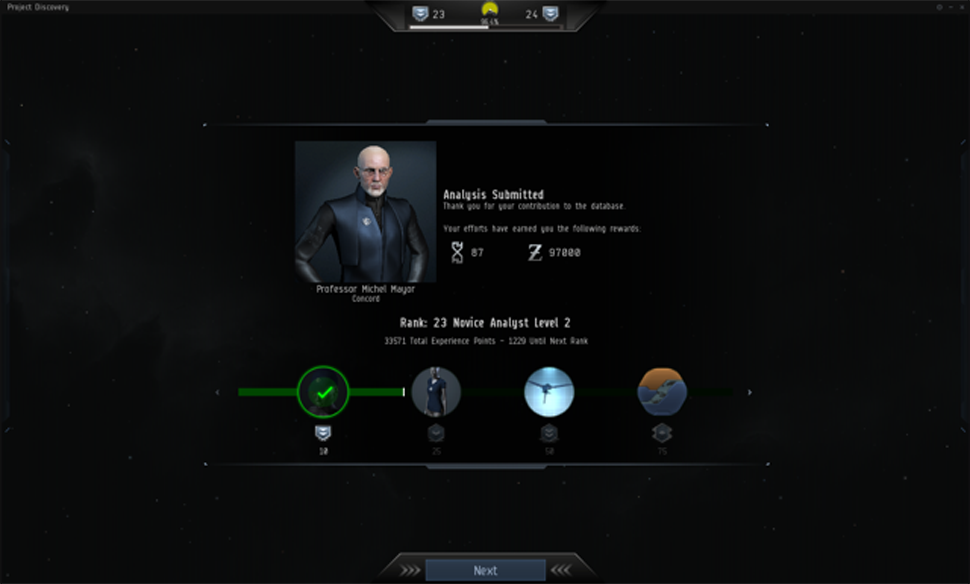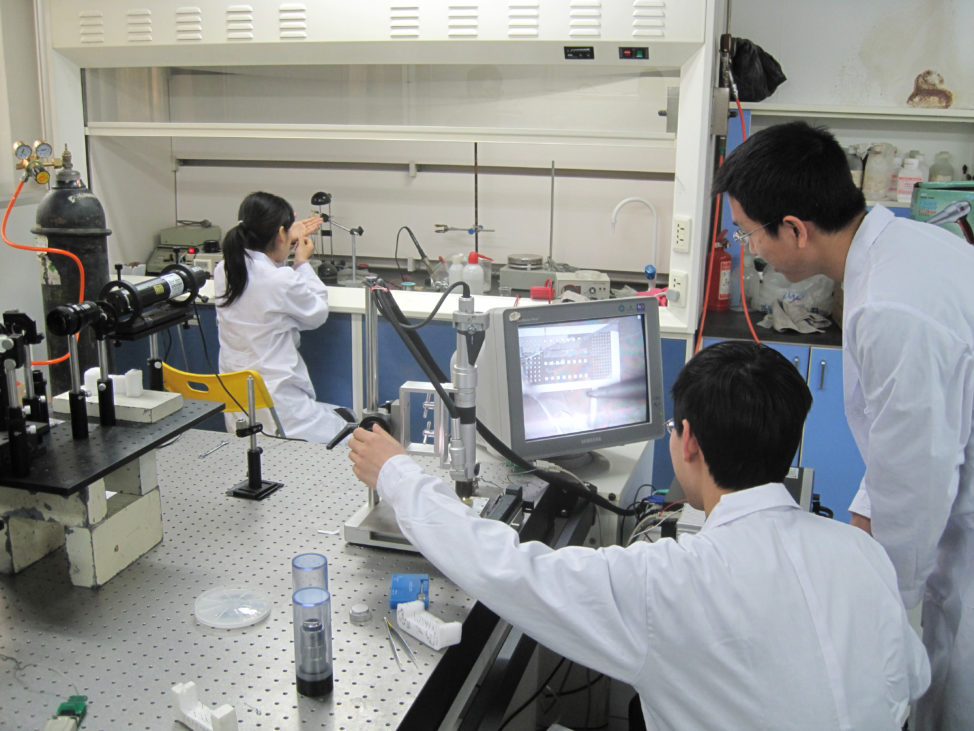Gamers and computer owners are joining forces with EVE Online’s Project Discovery and IBM’s World Community Grid in what could be a future avenue for accelerating underfunded scientific research.
Nearly 50,000 people are hunting for new planets outside Earth’s solar system in the massively multiplayer game EVE Online, thanks to a recent tweak from developer CCP Games that makes a mini game called Project Discovery part of EVE’s universe.
Project Discovery is a collaboration between CCP Games, Massively Multiplayer Online Science, Reykjavik University, the University of Geneva, and Swiss astrophysicist Michel Mayor. When it launched last year, players had the opportunity to help scientists identify patterns of protein distribution in human cells while getting rewarded for their effort. The project was so successful CCP Games decided to bring the search for exoplanets into EVE.

If a transit body is found, a Project Discovery player can mark the light curve, which shows the intensity of an object, with a period. In this screenshot, the transits align in a period of 0.5208, which means the player found a planet that orbits it’s star every 0.5208 days. (Sverrir Magnússon, CCP Games)
Participating players examine graphs called ‘light curves,’ which are measurements of light emanating from a star. They look for regular dips in the curve that indicate that the star’s light is being eclipsed. This in turn helps them determine if a transit body is passing in front of that star and identify new planets. In the process, they earn a variety of rewards.
“The core of the concept was seamless integration – with visuals, game mechanics, the narrative and the reward system,” said Attila Szantner, co-founder of Massively Multiplayer Online Science (MMOS) in an email.

Dr. Michel Mayor greets players when they first launch the Discovery Project and introduces them to the program.When the research is done, players can open the rewards windows shown above to claim a variety of items. (Sverrir Magnússon, CCP Games)
“Though gamification is heavily used in other citizen science projects, as far as we know this approach, this level of integration with already existing AAA titles [games with big budgets and promotion] has never been done before,” he added.
Citizen science plays “an interesting and important role in research,” he said, not only as a tool for crowdsourcing data analysis or data acquisition, but also as “an invaluable tool in science outreach.”
Several other projects, including Zooniverse, Eyewire, FoldIt, and Phyloand are also reaching out to citizen scientists with games and other tools to push research into underfunded fields, such as neglected tropical diseases.
More recently, IBM dedicated $200 million to expand the role of the private sector and volunteers in climate research through its World Community Grid, a collaboration that aims to provide scientists with more computing power – a growing trend that could point the way toward the future of research.
“It’s certainly one direction,” said Jennifer Ryan Crozier, President of the IBM Foundation and VP of Corporate Citizenship. “We know supercomputing power is a really important instrument for successful research. And with limited funding, this is a really effective way for serious researchers to get their hands on it.”
All it takes is a personal computer or a mobile device.
“Volunteers around the world are able to contribute at a really low bar of entry,” Crozier told Techtonics. “… It takes less than five minutes to sign up your Android device or your laptop and get it contributing and then you have a lot of choice about what kind of research you want to be contributing your computing power to.”
An unintrusive program is installed on the volunteers’ devices to run scientific calculations during downtime. It stops if the computer is needed or if resources are low. On mobile devices – only Android for the moment – it will only use Wi-Fi and run when the battery is charging. When the calculations are done, volunteers send the data back to scientists teaming up with IBM.
“We partner with researchers who are tackling these problems and provide them with millions-dollar worth of computing power for free to really accelerate and scale up their research effort,” said Juan Hindo, Program Manager of World Community Grid, in an interview with Techtonics.
Drugs for neglected diseases, for example, don’t get a lot of commercial interest or research funding, she noted. “And so we’re here to fill a gap to say ‘these are humanitarian causes that impact millions of people, whether it’s access to clean water or tropical, neglected diseases that research for is underfunded.’”

Scientists at Tsinghua University in China use IBM’s World Community Grid to discover the conditions necessary for moving water through carbon nanotubes 300 percent faster without requiring additional energy. The discovery has implications for more efficient water filtration. (Tsinghua University)
More than 730,000 volunteers have already contributed to research ranging from solar power and battling disease in Africa, including Zika and Ebola, to water filtration systems in China.
Chinese researchers using the World Community Grid have been trying to understand how nanotechnology could make large-scale water filtering more efficient. The effort “could have real implications for rural areas or regions of the world that don’t’ have access to big water filtration infrastructure plants,” said Hindo.
All researchers using the Grid are required to comply with an open data policy and make all their findings publicly available to benefit the scientific community at large. “And it really helps us address these challenges at a faster scale by spreading the knowledge,” she added.
Since its launch in 2004, the World Community Grid has donated one million years-worth of computing power, valued at around $500 million.
“The scale that this is able to offer is often something that researchers haven’t conceived of because they are so limited by their funding,” said Crozier.
